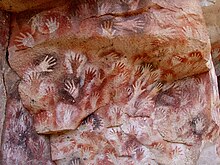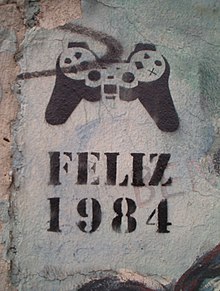
This is the Stencil House in Vermont, built 1804. Photo by Storylanding
Indeed, man's very first go at decorating might have involved a stencil:

The appropriately named Cueva de las Manos. The hand-shapes were made in about 7,300 BC. Photo by Mariano.
But where to find stencils now?
Well, tattoos are often stencilled:

design by Módis Ágnes Vadszederke
as are graffiti:

photo by Victor Grigas
Or, if all else fails, try putting a key or some coins on a flat surface and blowing a little dust over it.
You'll be part of a very long tradition.
Spot the Frippet: stencil. In the 1300s stanselen meant to decorate with bright colours. The word comes from the Old French estenceler, from estencele, a spark, from the Latin scintilla.
No comments:
Post a Comment
All comments are very welcome, but please make them suitable for The Word Den's family audience.